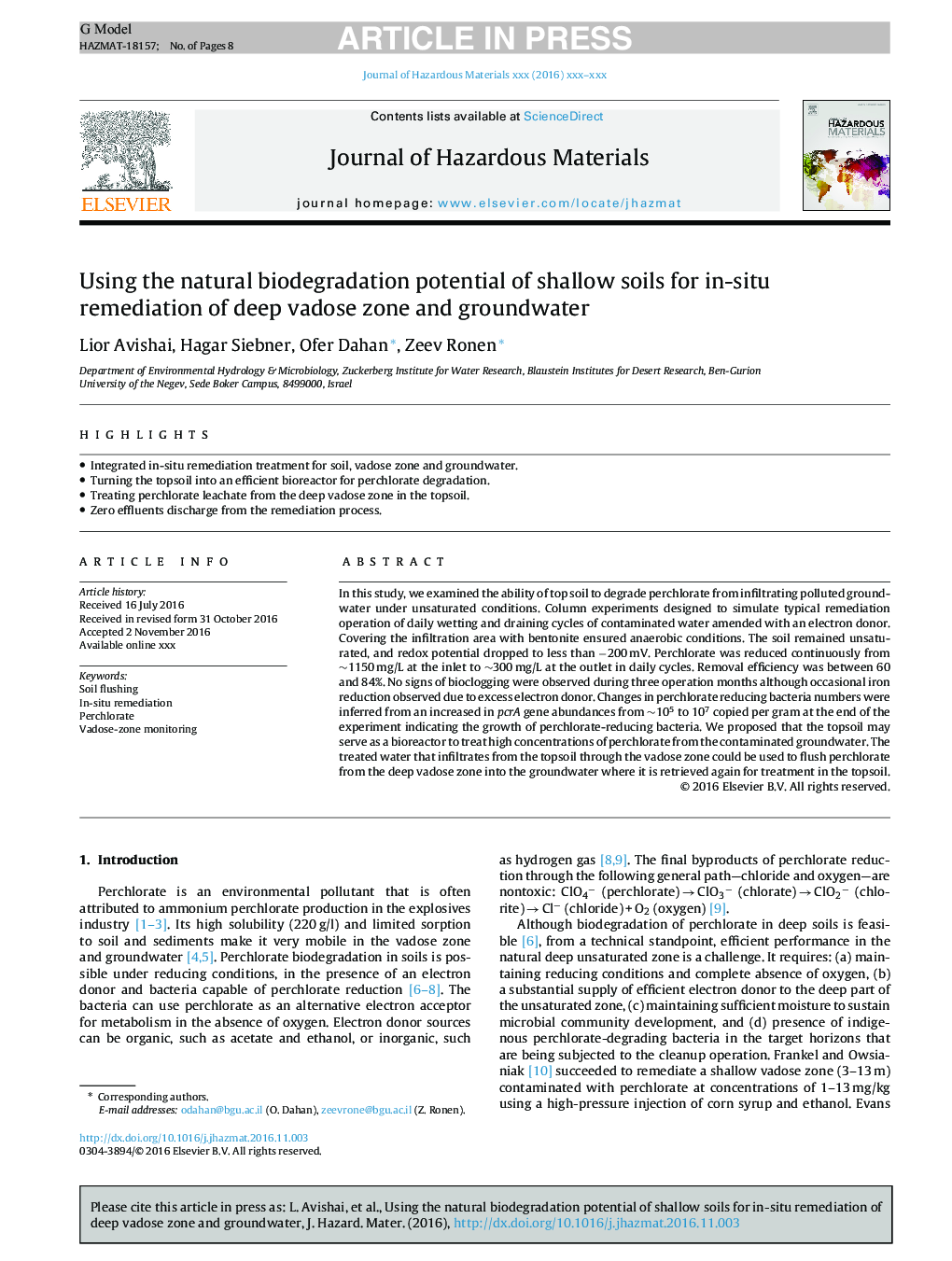| کد مقاله | کد نشریه | سال انتشار | مقاله انگلیسی | نسخه تمام متن |
|---|---|---|---|---|
| 4979865 | 1367815 | 2017 | 8 صفحه PDF | دانلود رایگان |
عنوان انگلیسی مقاله ISI
Using the natural biodegradation potential of shallow soils for in-situ remediation of deep vadose zone and groundwater
ترجمه فارسی عنوان
با استفاده از پتانسیل تجزیه زیستی طبیعی از خاک های کم عمق برای اصلاح در محل منطقه عمیق رهوز و آب های زیرزمینی
دانلود مقاله + سفارش ترجمه
دانلود مقاله ISI انگلیسی
رایگان برای ایرانیان
موضوعات مرتبط
مهندسی و علوم پایه
مهندسی شیمی
بهداشت و امنیت شیمی
چکیده انگلیسی
In this study, we examined the ability of top soil to degrade perchlorate from infiltrating polluted groundwater under unsaturated conditions. Column experiments designed to simulate typical remediation operation of daily wetting and draining cycles of contaminated water amended with an electron donor. Covering the infiltration area with bentonite ensured anaerobic conditions. The soil remained unsaturated, and redox potential dropped to less than â200Â mV. Perchlorate was reduced continuously from â¼1150Â mg/L at the inlet to â¼300Â mg/L at the outlet in daily cycles. Removal efficiency was between 60 and 84%. No signs of bioclogging were observed during three operation months although occasional iron reduction observed due to excess electron donor. Changes in perchlorate reducing bacteria numbers were inferred from an increased in pcrA gene abundances from â¼105 to 107 copied per gram at the end of the experiment indicating the growth of perchlorate-reducing bacteria. We proposed that the topsoil may serve as a bioreactor to treat high concentrations of perchlorate from the contaminated groundwater. The treated water that infiltrates from the topsoil through the vadose zone could be used to flush perchlorate from the deep vadose zone into the groundwater where it is retrieved again for treatment in the topsoil.
ناشر
Database: Elsevier - ScienceDirect (ساینس دایرکت)
Journal: Journal of Hazardous Materials - Volume 324, Part B, 15 February 2017, Pages 398-405
Journal: Journal of Hazardous Materials - Volume 324, Part B, 15 February 2017, Pages 398-405
نویسندگان
Lior Avishai, Hagar Siebner, Ofer Dahan, Zeev Ronen,
